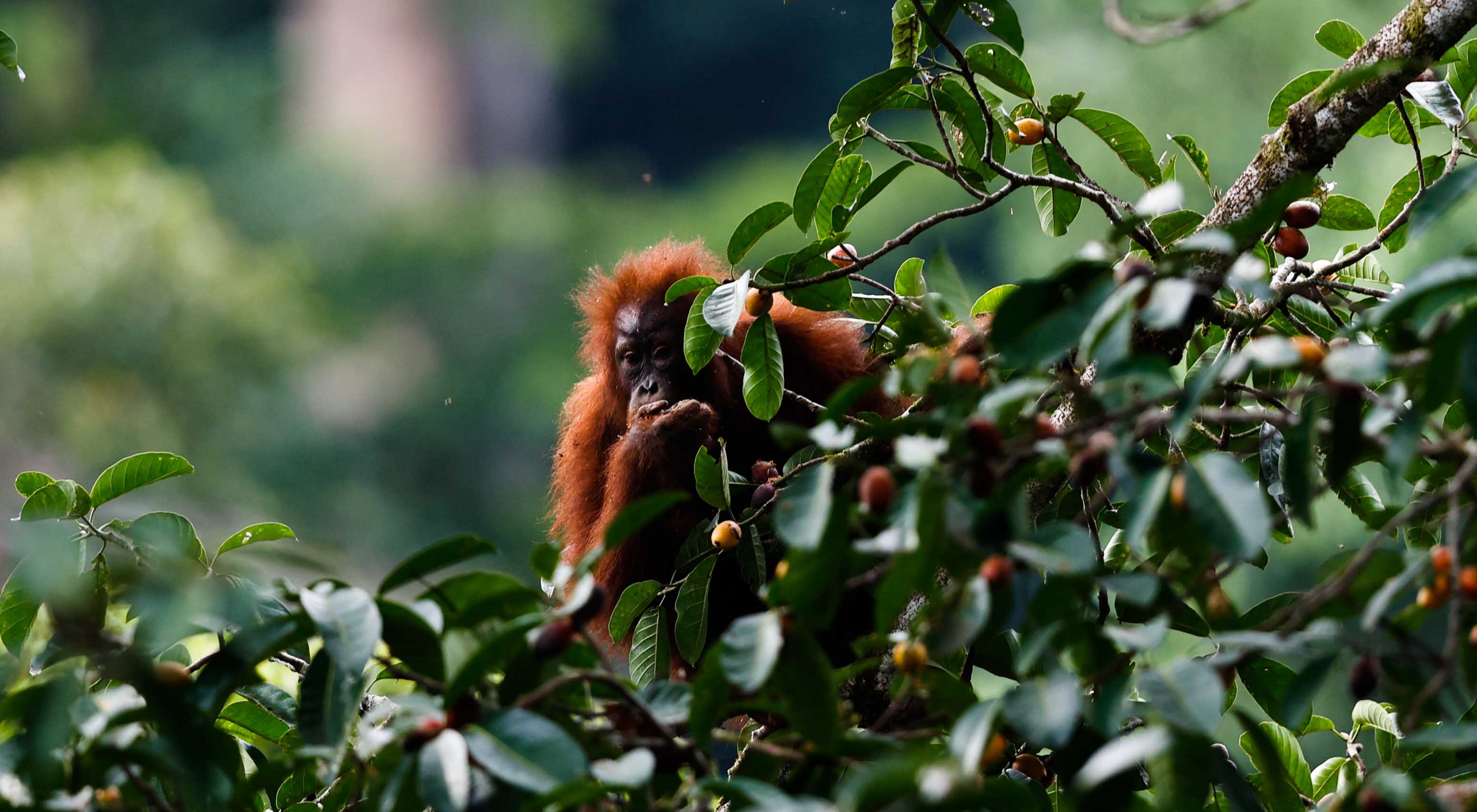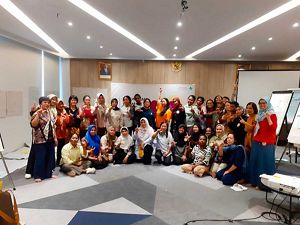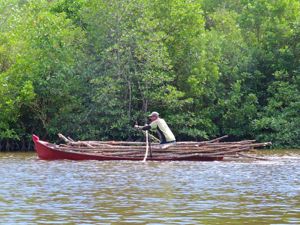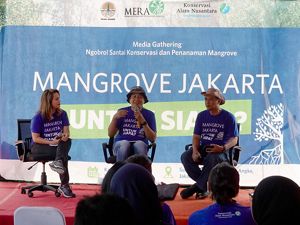Why Orangutans?
Oleh Mohamad Arif Rifqi, Endangered Species Habitat Conservation Spc. YKAN
Some of us may be familiar with monkeys or apes. We know from fables, zoos, or shows on television or electronic media. Its ability to easily imitate some human behavior makes this animal attract attention. This group of animal types is known as the primate group. One of the sub-groups of the animal class has mammary glands (mammals) and has undergone more evolution than other groups of animal species or various biological species.
One popular primate type is the orangutan—derived from Malay, which means "people in the forest." This type of primate belongs to the ape group, namely the primates that do not have tails. Meanwhile, monkey types can be grouped based on size: monkeys with bodies that are relatively large or great apes, such as orangutans, bonobos, chimpanzees, and gorillas. Then, there are relatively small monkeys, such as gibbons, and several types of gibbons.
Read: Munara Beba: How the Biak Karon Tribe Protects the Sea
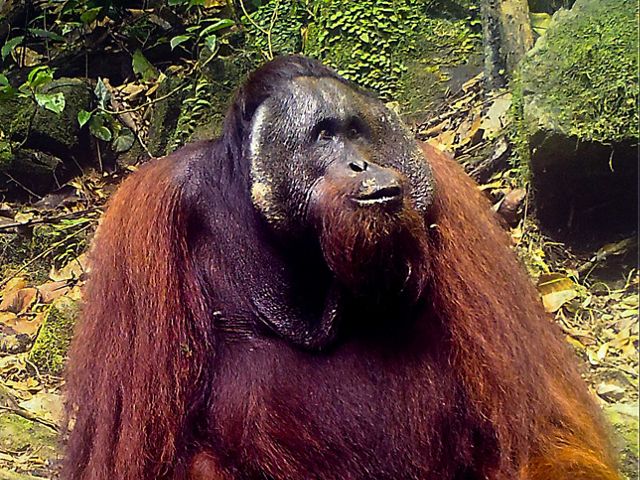
The distribution of orangutans is unique compared to other great apes; all great ape relatives are distributed in Africa, whereas orangutans are only found on the Asian continent. It also has a bright hair color (brownish yellow), while its relatives in Africa are primarily black with a bit of gray or silver.
The history of fossils explains the distribution's origin from the Yunan mainland in southern China to the southeastern tip of the Sunda shelf (Sundaland). Experts also consider this species to be related to its more prominent ancestor, namely the giganto monkey (Gigantopithecus sp.), an animal that some people associate with the story of the yeti or bigfoot. Apart from that, orangutan fossils have also been found on the island of Java, namely Sangiran in Central Java and Punung and Trinil in East Java. Habitat loss and hunting are thought to be one of the leading causes of its extinction in the past.
Currently, most of its natural population can be found in forested areas on the northern part of Sumatra Island and Kalimantan Island. The population in Sumatra includes the Leuser and Batang Toru Ecosystem Areas, and there is an orangutan release area in the Bukit Tigapuluh forest, Jambi. Meanwhile, orangutans in Kalimantan are almost spread across every province in Indonesia and Malaysia's Sabah and Sarawak regions.


Since 2017, three types of orangutans have been recognized. The Tapanuli orangutan (Pongo tapanuliensis) is the 'youngest' type of orangutan after being grouped separately from its relative, the Sumatran orangutan (Pongo abelii). Genetic and morphological differences, one of which is predicted to occur due to the eruption of Mount Toba, are the distinguishing characteristics of the two types. Apart from that the third type is the Kalimantan orangutan (Pongo pygmaeus).
More specifically, Kalimantan orangutans have three sub-types, which are separated by three large rivers. The Kalimantan orangutan sub-type Pongo pygmaeus pygmaeus is spread to the north of the Kapuas River, West Kalimantan, to Sarawak, the P.p.wurmbii sub-type is extended to the south of the Kapuas River, West Kalimantan to the west of the Barito River, Central Kalimantan. Meanwhile, the P.p.morio subtype is naturally distributed in the northern part of the Mahakam River, East Kalimantan to Sabah. The differences between the three sub-types are often not visible, but the Morio sub-type tends to be darker than the others.
Looking at the distribution of orangutan habitat as a result of the 10-year international workshop, Orangutan Population and Habitat Viability Assessment 2016, orangutan habitat has been identified at around 18 million hectares on the islands of Sumatra and Borneo, including Kalimantan, Sabah, and Sarawak. Of course, as one of the largest islands in the world and has a relatively large forested area, most of its habitat is in Kalimantan. There are 48.39% in Central Kalimantan Province, 29.4% in West Kalimantan Province, 22.17% in East Kalimantan, and 0.04% in South Kalimantan.
Of the approximately 16 million hectares of orangutan habitat in Kalimantan, 13% is in conservation areas, also known as Nature Reserve Areas/Natural Conservation Areas. Generally, these areas have a management unit at the site level, either in the form of a Natural Resources Conservation Center or a National Park Office.
Meanwhile, 19% is in the Protected Forest area based on hydrological function and slope, 60% is in Production Forest (22% for production, 34% for limited production, and 4% for conversion). In addition, around 7%-8% is identified in forested areas in the Other Use Area (APL) area function.
The fact that there is multi-functionality and regional status in the Kalimantan orangutan habitat requires cooperation between area managers and interested parties to show commitment and take an active role through collaboration in managing the habitat and the population within it. In essence, management that can maintain the current habitat and population or even support an increase in habitat quality and population size over the long term is needed.
The popularity of orangutans came to the attention of the international public due to Alfred Russell Wallace's book The Malay Archipelago in 1869. Compared to other apes, their unique morphology and distribution have made orangutans have their own position in public attention. More than that, the role of orangutans in nature cannot be replaced.
It is common knowledge that orangutans are frugivores (most consume fruit). Other animals, such as birds and several mammals, also consume fruit. However, the amount consumed by orangutans is relatively large at one time. Apart from that, orangutans also have a comprehensive home range; one female individual can reach 850 ha, while one male individual is more exhaustive; even one juvenile male has almost no measurable area because no researchers have been able to measure it to date. At least these two facts, the ability to consume fruit in large quantities and their extensive home range, position orangutans as the best seed dispersers in their habitat. This is supported by several studies that state that the dormancy period for seeds from fruit eaten by orangutans is shorter, and they can grow more quickly and naturally than plants planted by humans from nurseries.
Another fact that is also commonly known is the genetic similarity between humans and orangutans, only a 3% difference. However, if we talk about genetics, the 3% figure is relatively significant regarding phenotype. However, there is a consequence that several types of plants may be consumed that can be beneficial in terms of food, nutrition, nutrition, and medicine for humans. Because several Dayak community groups in Central Kalimantan and West Kalimantan use several types of forest plants consumed by orangutans for the same function, if intensive studies are carried out, excellent benefits for human welfare may come from knowledge of orangutans in nature. For example, the discovery that the Macaranga conifera plant species is one of the orangutan foods for potential cancer treatment and antioxidants, which researchers from Mulawarman University recently revealed.
Only a few scientific facts and other lessons have been revealed about the lives of orangutans and their interactions with their habitat. However, there is relatively more research on orangutans than other endangered animal species in Indonesia. However, there will be more and more critical questions to be answered regarding strengthening pure science, developing applied science, and solutions to the problems of human life and the Earth.
Therefore, it is correct if experts and observers call orangutans an umbrella species. This type can cover conservation efforts and results (study, protection, and use) of other biodiversity in the tropical rainforests of Sumatra and Kalimantan.
The wise saying that natural treasures and natural resources, including wild animals such as orangutans, should not be considered heritage for the future feels right in the current context. For some people, it is possible to use inheritance as much as possible for pleasure and to fulfill desires. However, it would be wiser if it was positioned as a legacy for posterity.
The current fact is that orangutan habitat has shrunk since humans first paid attention to orangutans. It cannot be denied that forests have decreased over time. Several interventions have been carried out until recent news suggests deforestation is slowing down. However, for orangutans, more is needed.

Orangutans need significant, interconnected habitats to find food, breed, and explore. It is easy to see images of fragmented forests today. The population is also threatened due to hunting activities that have occurred before, and even death due to conflict or negative interactions with humans. In this case, orangutans tend to be in a weaker position. The threat of habitat loss as an externality of unsustainable development complements the suffering of orangutans in nature and the risk of natural disasters, such as forest and land fires.
Orangutans cannot reproduce quickly; the birth interval between offspring can be 6-8 years. One female parent will not give birth to new offspring while caring for offspring from birth to adolescence. Another thing is also influenced by the changing cycle of forests, which are generally abundant every five years, so that the nutrients meet the physiological needs of reproduction, and even this cycle is threatened with instability due to climate change.
In this situation, some humans, aware of their role as caliphs on Earth, have made conservation efforts to preserve orangutans in their habitat. These efforts are generally carried out through conservation in their natural habitat, habitat protection, monitoring, and even enrichment of degraded habitats. Practitioners and experts call it in-situ conservation. The existence of conservation areas and areas outside conservation areas that are managed wisely is the foundation for the long-term sustainability of orangutans.
Apart from that, conservation efforts are also carried out outside their natural habitat, also called ex-situ conservation. Conservation and science education can also be carried out in facilities such as zoos and safari parks. Also, there are efforts to rehabilitate orangutans who have been forced to leave their natural habitat due to conflict, poaching, and illegal trade. This must be done to deal with in-situ habitat "leakage" and even return it to its origin in the forest.


